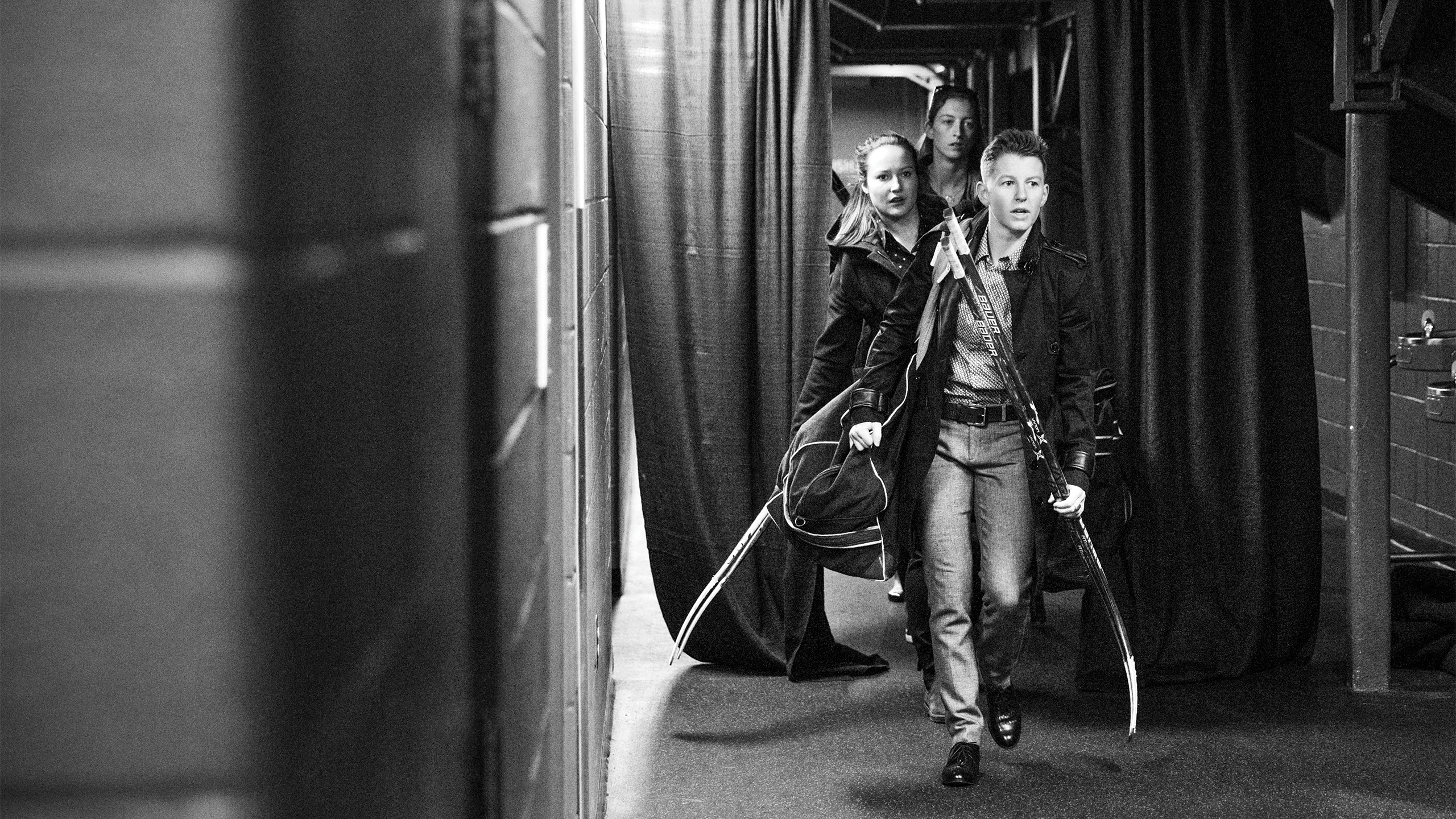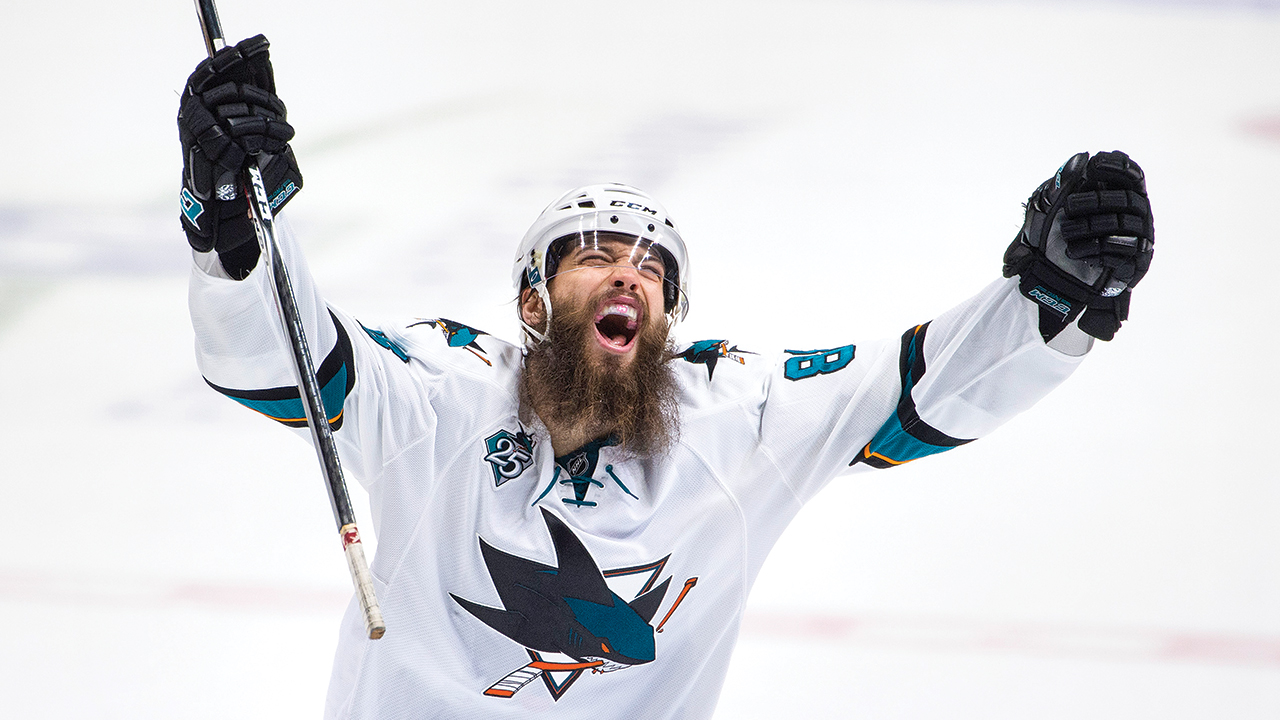
We look back on the 1972 Summit Series as a victory that transcended a game. It was a battle of nations, of political ideals, of the fundamental difference between them and us. The result was taken as proof of our superiority on the ice and the “free world’s” superiority off it. But after the headlines declared victory for the West and democracy, after the parades and the brief reassurance that the game was ours, we were left with a lingering admiration: Damn, those Soviets could play. In their dazzling display of speed and skill, the Soviets effectively changed the game. And a decade later, Victor Nechaev became the first Soviet-trained player to skate in the NHL. From Vladislav Tretiak to Alex Ovechkin, the past 40 years in hockey are unimaginable without the presence of Russian stars. In the end, that was the real victory of ’72.

Outside the ring, it was a rout. It was a mismatch. Frazier had no counter for Ali’s insults, his cruel jokes, his dehumanizing nicknames. When Ali was forced into exile for his refusal to honour the draft, Frazier became champ in his absence and then tried to help him get his licence back, offered to loan him money, tried to help him return to the ring and make millions of dollars for both of them. And then to be called ugly and ignorant and an Uncle Tom, to be labelled a gorilla—that stuck in Joe’s craw. Read more.


The Montreal Canadiens made a lot of enemies en route to winning 24 Stanley Cups. In the ’70s, their biggest rival was the Boston Bruins, whom they met in two consecutive Stanley Cup finals, in 1976 and ’77 (Montreal won both times. The enmity between the teams has continued in the 21st century, with the most recent outburst coming in March 2011, when Bruins defenceman Zdeno Chara rode Montreal’s Max Pacioretty into a stanchion, and the latter suffered a fractured vertebra. Boston fans said it was a rub-out gone wrong; Habs fans said it was a dirty play laced with malicious intent. The teams met a few weeks later in an epic first-round series, won in overtime of game seven by Boston. Read more.

When your job is so difficult that only one in several million people can handle it, a certain sympathetic understanding exists between members of that elite club. It’s why Bill Clinton and George W. Bush get along just fine—even when their respective parties are at one another’s throats. And it’s why Tom Brady and Peyton Manning can represent both the greatest football rivalry of the new millennium as well as one of the best examples of mutual respect and admiration among pro athletes. Each of them will be remembered as the greatest quarterback of this era by millions—and both sides of that debate will have an extremely valid case.


A tiny, thoughtful Russian nicknamed “The Professor” started it. The Detroit Red Wings’ Igor Larionov, all of five-foot-nine and 170 lb., decided he’d had enough of being shoved and harassed by Peter Forsberg, the Avalanche sniper who easily had three inches and about 40 lb. on him. The two collided near the boards and Larionov snapped. He reached up, put Forsberg in the best headlock he could apply and wrestled the bigger man to the ice. That opened the floodgates. Read more.

Rally after rally, the two legends held the capacity crowd captivated in Boston. Bjorn Borg, the cool, collected Swede with the relentless, almost robotic baseline game vs. John McEnroe, the original tennis brat from Queens with the strong serve and aggressive net attack. Counterparts in both game and demeanour, they divided a generation: John or Paul? Coke or Pepsi? Mac or PC? Borg or McEnroe?
In the 1980 Wimbledon final, these two combined for the most famous match in tennis history: A five-set battle that included the greatest tiebreaker to date, an 18–16 thriller in the fourth set in favour of McEnroe, who eventually fell to Borg. Johnny Mac got his revenge the following year, and after three consecutive finals losses to the man who had taken his No. 1 ranking, Borg, just 26 years old, called it a career.
Theirs may not have had the breadth of other rivalries in the sport. After all, they only faced each other 14 times between 1978 and ’81, playing to a dead tie, a 7–7 head-to-head record. We’ll never know how many more finals they would have battled for, how many classics they would have provided the fans. Looking back, their rivalry almost seems like a mirage, a four-year dream sequence. Maybe that’s why it’s so irresistible.
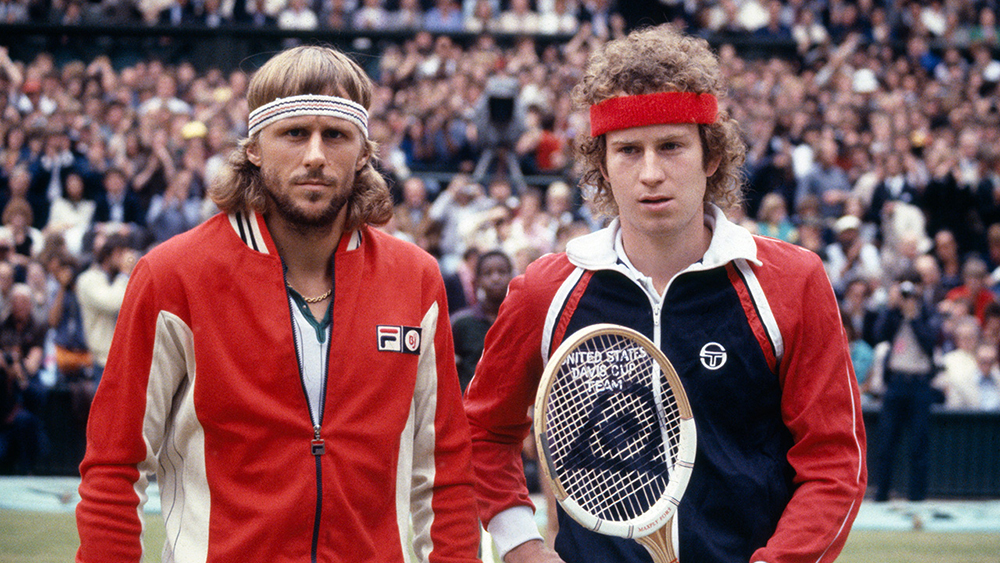

Which shoes have more game?
Consider each one’s first athlete.
For Adidas, it was Jesse Owens, a track star from Alabama who wore the Dassler brothers’ shoes at the 1936 Olympics. The German brothers later feuded, and Rudolf Dassler created Puma. Adolf, a.k.a. Adi, meanwhile founded Adidas (Adi + Das) in 1949.

El Clasico comes around twice in a calendar year—that’s just two chances for the Spain’s perennial best to have at each other. As of last spring, Real Madrid had 93 wins to Barcelona’s 90; it had 390 goals to Barcelona’s 376. But Barca boasts the matchup’s top scorer in Lionel Messi, who put away his 19th, 20th, and 21st Clasico goal in a league game on March 23, 2014.

On the court, Kobe Bryant and Shaquille O’Neal were one of the most dominant guard–big man combos in NBA history—winners of three straight titles with the Lakers. Off it, their mutual enmity and willingness to air their dirty laundry made for the greatest teammate-on-teammate rivalry ever.
To wit:
After Bryant underwent surgery on his shoulder and knee, O’Neal kicked off the ’03–04 season with some passive aggression.
SHAQ: “He should probably look to be more of a passer until he gets his legs strong.”
KOBE: “I definitely don’t need advice.”
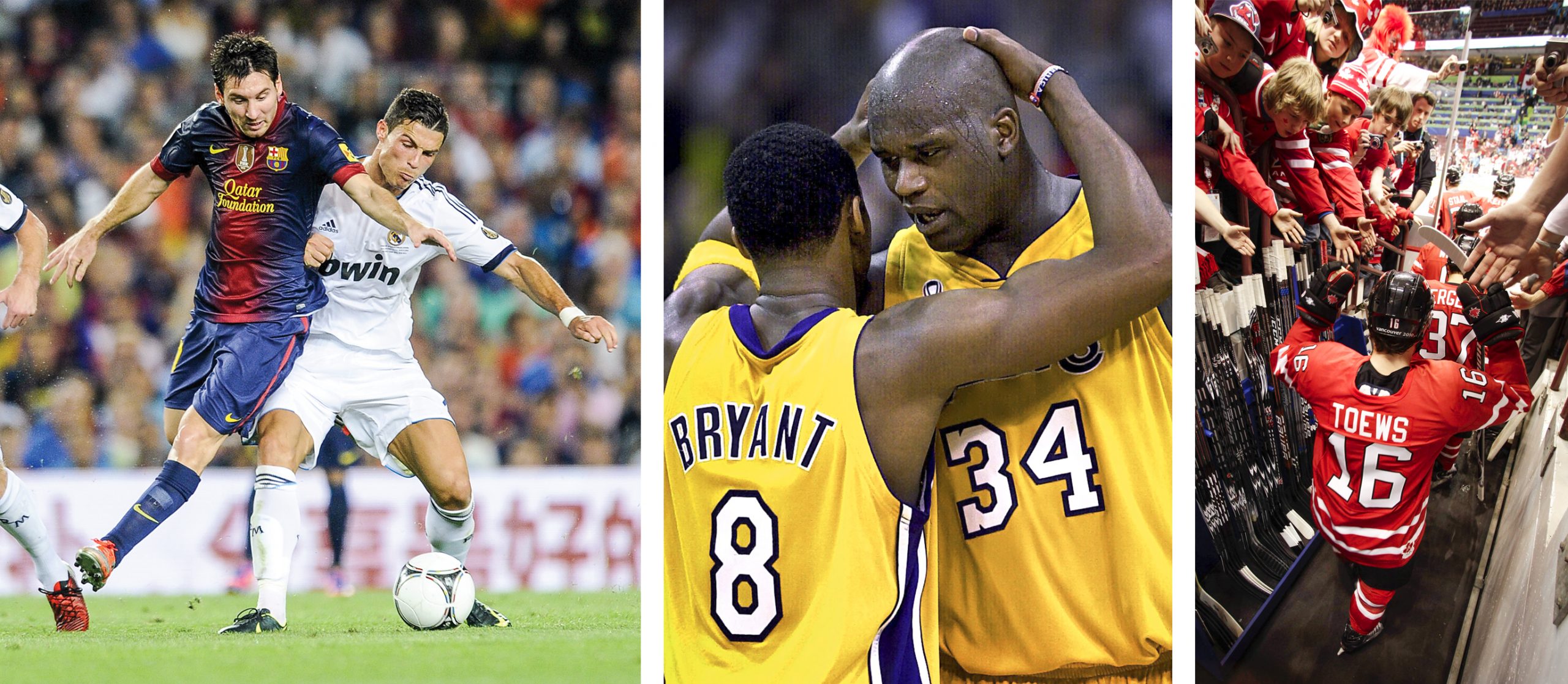

How does Canada stack up against the U.S. in every sport ever? About how you’d expect. We have 203 Summer Olympic medals to their 1,390; 148 Winter Olympic medals to their 219; two Cy Young awards to their 98 and two NBA MVPs to their 59. Canadian NHL teams have collected 41 Stanley Cups to American teams’ 48. But Canada has way more Hart: 77.5 Canadian players have been recognized as the player most valuable to their teams at the end of the season versus 2.5 American players. (What’s with the 0.5? We’re splitting the difference on Brett Hull.)

The Red Sox were at least in line for a quick execution in 2004, when the Yanks stormed out to a 3–0 series lead. But Boston won games four and five at home, and were leading 4–2 in game six when Rodriguez came up to bat with Jeter on first. All the reigning league MVP could manage off Bronson Arroyo was a nubber up the first-base line, which the Boston pitcher had no trouble scooping up. When Arroyo went to tag Rodriguez, the latter swatted the ball out of the former’s glove and—horrifyingly, for Sox fans—it rolled well past the bag in foul territory. First-base umpire Randy Marsh gave the safe signal as Rodriguez scampered to second. With Yankee Stadium quaking, Arroyo crouched down and extended his arms as if to say, “The whole baseball world is watching this game; there’s no way I’m the only one who saw that.” He was right. The umps reversed the call and in so doing, seemed to alter the alchemy of the entire rivalry. Finally, something fell Boston’s way. Finally, something happened to make you believe the Babe himself wasn’t at the big bar in the sky with the baseball gods as they all schemed on ways to keep Massachusetts miserable. Read more.

The first real showdown between Arnold Palmer and Jack Nicklaus epitomized their long-time battle. “Arnie’s Army” had occupied Oakmont, Pa., to cheer on their hometown hero, the 32-year-old, three-time-Masters-winning Palmer, in the 1962 U.S. Open. Nicklaus, then 22, was their whipping boy, heckled with calls of “Fat Guts” and “Ohio Fats.” As Ian O’Connor notes in his book Arnie & Jack, sportswriter Jerry Izenberg said reporters “felt like they were covering a lynching.” But Nicklaus stayed focused and won his first major. “Whatever Arnie did, Jack just did a little better,” Palmer’s brother Jerry said.
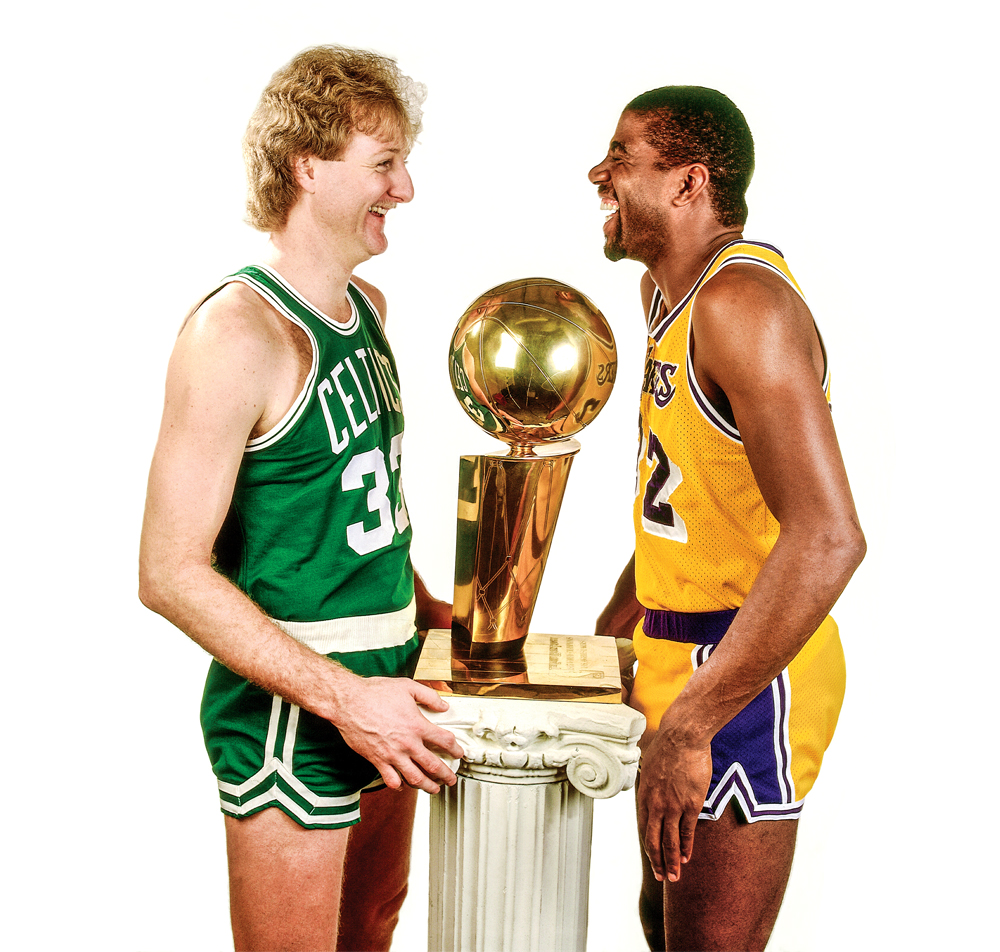

Larry Bird and Earvin “Magic” Johnson never really hated each other. The first time they met they couldn’t stop talking about each other. It was the summer of 1978, and the pair were benchwarmers on a team of college all-stars, playing in an event called the World Invitational Tournament. There is no videotape; no gushing “we have seen the future” newspaper headlines or Twitter hashtags or YouTube clips. It was a moment that came and went largely unremarked upon, except by the two men themselves. “I’ve just seen the best player in college basketball,” Bird told his brother Mark. “It’s Magic Johnson.” Meanwhile, Johnson was left with the task of explaining to his friends back home in East Lansing, Mich., that the best player he’d seen was a white guy. “A lot of black guys always ask me, ‘Did Larry Bird really play that good?’” Johnson said years later. “I said, ‘Larry Bird is so good it’s frightening.’” Read more.

The Alabama-Auburn college football rivalry has been wreaking havoc in the Southern state for more than 100 years, since the two schools first faced each other in Birmingham, the state’s largest city, back in 1893. “Hate” isn’t too strong a word to describe the animosity between the fans of these two football teams—educated people have even compared it to the Israeli-Palestinian conflict. It’s a rivalry that has broken down friendships, split up marriages and even led to the shedding of blood. “For a long time, the only thing this state had to be proud of was football,” says David Housel, a former Auburn athletic director and the school’s resident sports historian. “It’s about more than just a team. You’re cheering for your family. You’re cheering for your way of life. You’re cheering for your culture and traditions, for your whole way of looking at things.”
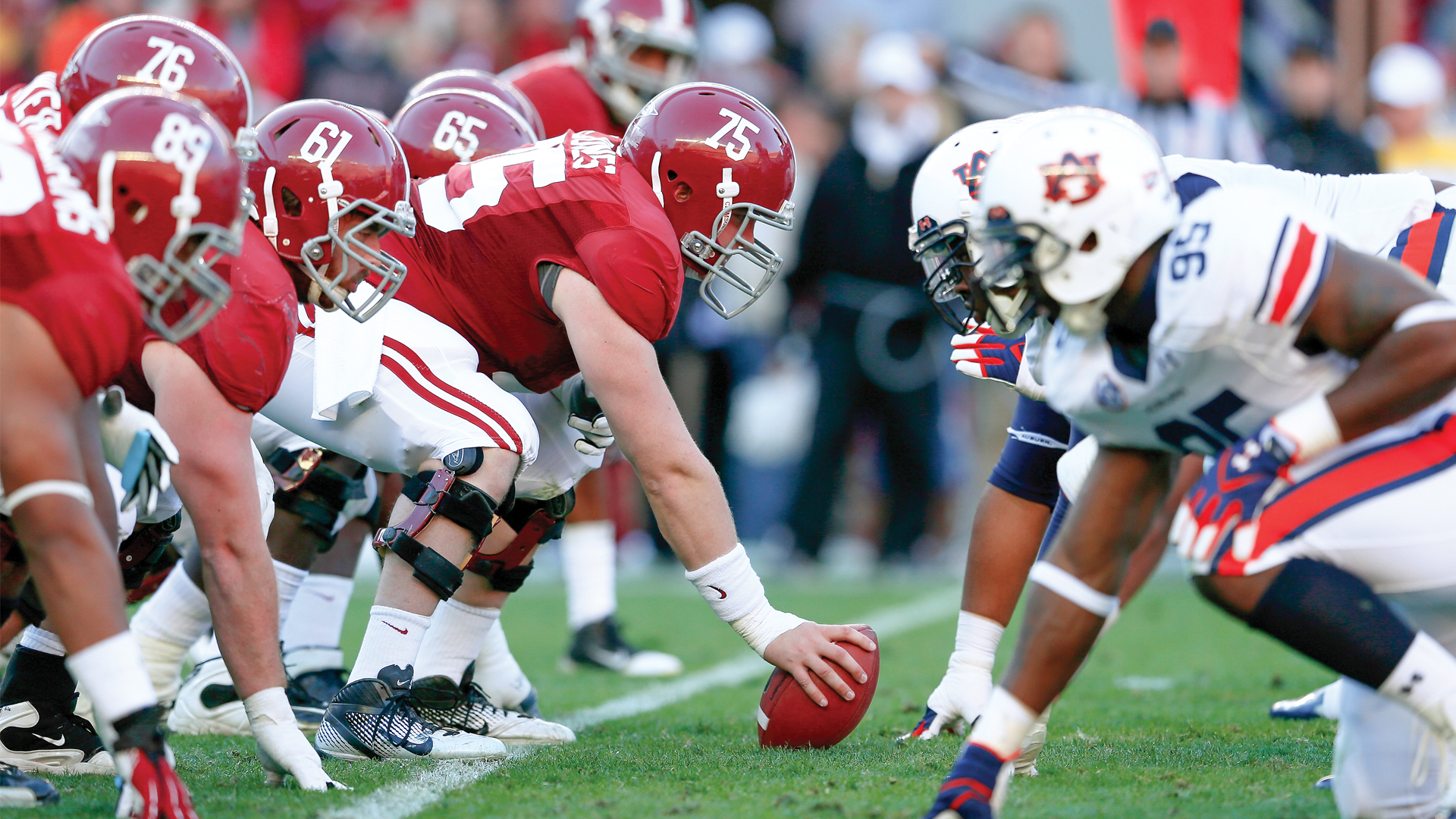

Call it tennis’s answer to Ali-Frazier. On one baseline stands Roger Federer, arguably the greatest player in the history of the game. And across the court, Rafael Nadal, his only foil. One a right-handed, light-footed finesse player with an unmatched ability to catch his opponents with a delicate shot. The other a left-handed, foot-stomping, hard-hitting power player who dresses like a pirate, sure, but who has earned respect by returning the shots no one thinks possible.
Federer-Nadal is a showdown that transcends sport. An evolution of the clash between man and machine. This is mind vs. power. Ability vs. will.

Imagine the frustration felt by heels and babyfaces alike: Back in the ’80s, the very elite of professional wrestlers worked in the considerable shadows of two guys who couldn’t wrestle a lick. Chiselled specimens who could do backflips off the top rope, former Olympic athletes, second- and third-generation pros who grew up in the game all took a back seat to André the Giant, the immovable object, and Hulk Hogan, a wrestler who barely mastered a single basic move. Read more…

Joe Montford spent most of his Hall of Fame career, which spanned from 1995–2006, with the Ti-Cats. In 2002, the defensive end briefly switched sides, playing for Toronto. But, he says, “I’ll always have black-and-gold running through my veins.”
“It always seemed like the Argos considered themselves more elite than us. Like Toronto had the finer things in life. We saw ourselves as a scrappier, more blue-collar team. In Hamilton, people are giving their last dimes, their last dollars to get their tickets. They go, ‘We’ve got this much money for food and this much money for Ti-Cats tickets. What are we going to sacrifice this month? Because it’s definitely not going to be the Ti-Cats tickets. We might have to skip a meal, but we’re going to that game.’
“It was a fight down in the trenches. You don’t know when somebody’s going to go low or take a side-swipe at you. You had to have your eyes open and your ears peeled back so you could know when something’s coming.
“Labour Day against the Argos was the game. We could lose every game in the world but we had to win on Labour Day at Ivor Wynne. The first game I came back to Ivor Wynne with the Argos was Labour Day. The fans, the team, even the referees seemed hostile. I was thinking, ‘Oh my goodness, I couldn’t imagine going through this every year.’ It seemed like everybody was looking at me sideways.”


More than nine decades and 242 games after their first meeting, the rivalry between Duke and North Carolina is as heated as ever. The two storied programs sit 1-2 in ACC regular-season championships (with UNC’s 30 leading the way) and conference-tournament titles (Duke’s 19 is the record).
With UNC ahead all-time at 134–108, North Carolina’s all-time leading scorer and former Toronto Raptors forward, Tyler Hansbrough, sheds light on the most fabled matchup in NCAA hoops. Read more.

Baseball rivalries aren’t supposed to be this hostile. Dodgers-Giants is a matchup that has seen nearly the entire Giants roster swarm the stands at Washington Park in Brooklyn to brawl with heckling fans in 1910; that has seen future Giants Hall of Famer Juan Marichal beat Dodgers pitcher Johnny Roseboro repeatedly in the head with a bat in 1965; that has seen Dodgers all-star Reggie Smith twice charge the stands, in 1978 and 1981,
to fight Candlestick Park spectators who had thrown objects at him.
The rivalry is so important, so sacrosanct to the sport of baseball, that it was transplanted in 1958 to the other side of the country in order to grow the game. The two teams have now been in California for nearly as long as they were in New York—they’ve been playing each other since 1889—but even after more than 2,000 games, they still can’t settle the score. Through August 2013, the Giants held just a 24-game lead in the all-time series—1,196–1,172.

The best rivalries work as metaphors for greater conflicts, and the Dallas Cowboys versus the Washington Redskins is a shoo-in. It’s simple: A half-century of gridiron combat between the ’Boys—playing out of “don’t tread on me” Texas—and the ’Skins—a team born in the beating heart of the nation’s bureaucracy—symbolizes the increasingly fractured American political system. Two wildly opposed sides moving ever further away from one another, screaming with increasing volume while a huge swath of ordinary people cower in the middle with their fingers in their ears.


In Glasgow, it was always Protestant or Catholic, Unionist or Republican, Rangers or Celtic. You were one or the other. Today, the city is increasingly secular, but its fiercely sectarian history remains entrenched on the soccer pitch. Countless assaults and even murders stem from Old Firm tensions, with increased rates of domestic violence on derby days. And so, when the Rangers signed their first high-profile Catholic player, ex-Celtic striker Maurice “Mo” Johnston, on July 10, 1989—117 years after the club’s inception—it was a truly seismic moment. Bill McMurdo, Johnston’s agent and the man who negotiated the transfer from French club Nantes to Rangers, relives it.
“Maurice was a Celtic legend. They absolutely loved him. When they thought he was coming back, they started celebrating in the street. Of course, when he signed for their archrivals, it just killed them. They began calling him Judas. I remember [then–Rangers manager] Graeme Souness saying, ‘Bill, if Johnston signs, Celtic will suffer for the next 10 years.’ And he was right; Rangers won nine championships on the trot.”
“When the news broke [in Glasgow], Rangers supporters went to the club and laid wreaths at the door. They burned their scarves. They threatened to return their season’s tickets, to never set foot in Ibrox again. The only reason that never happened is because he was so good.”

